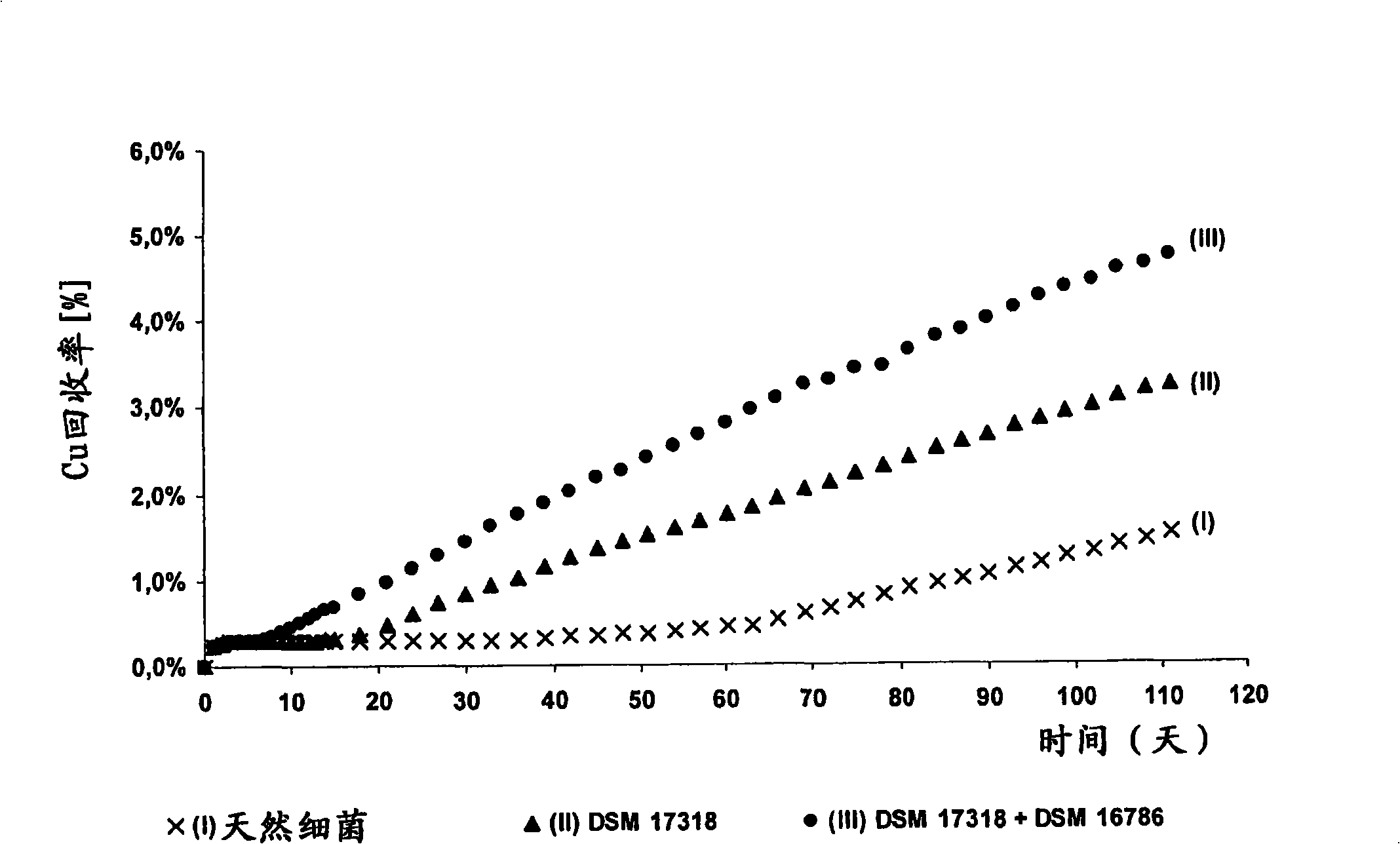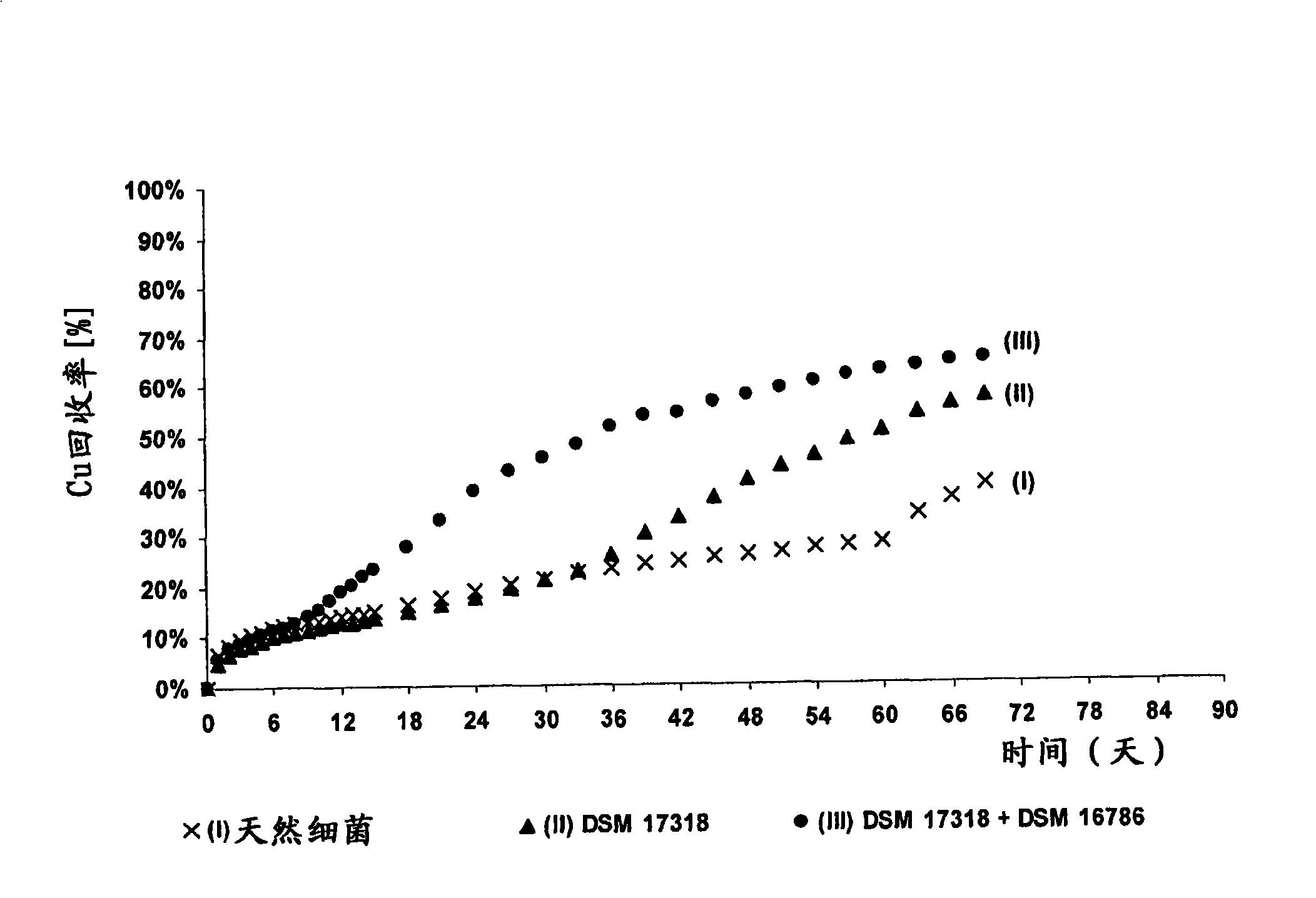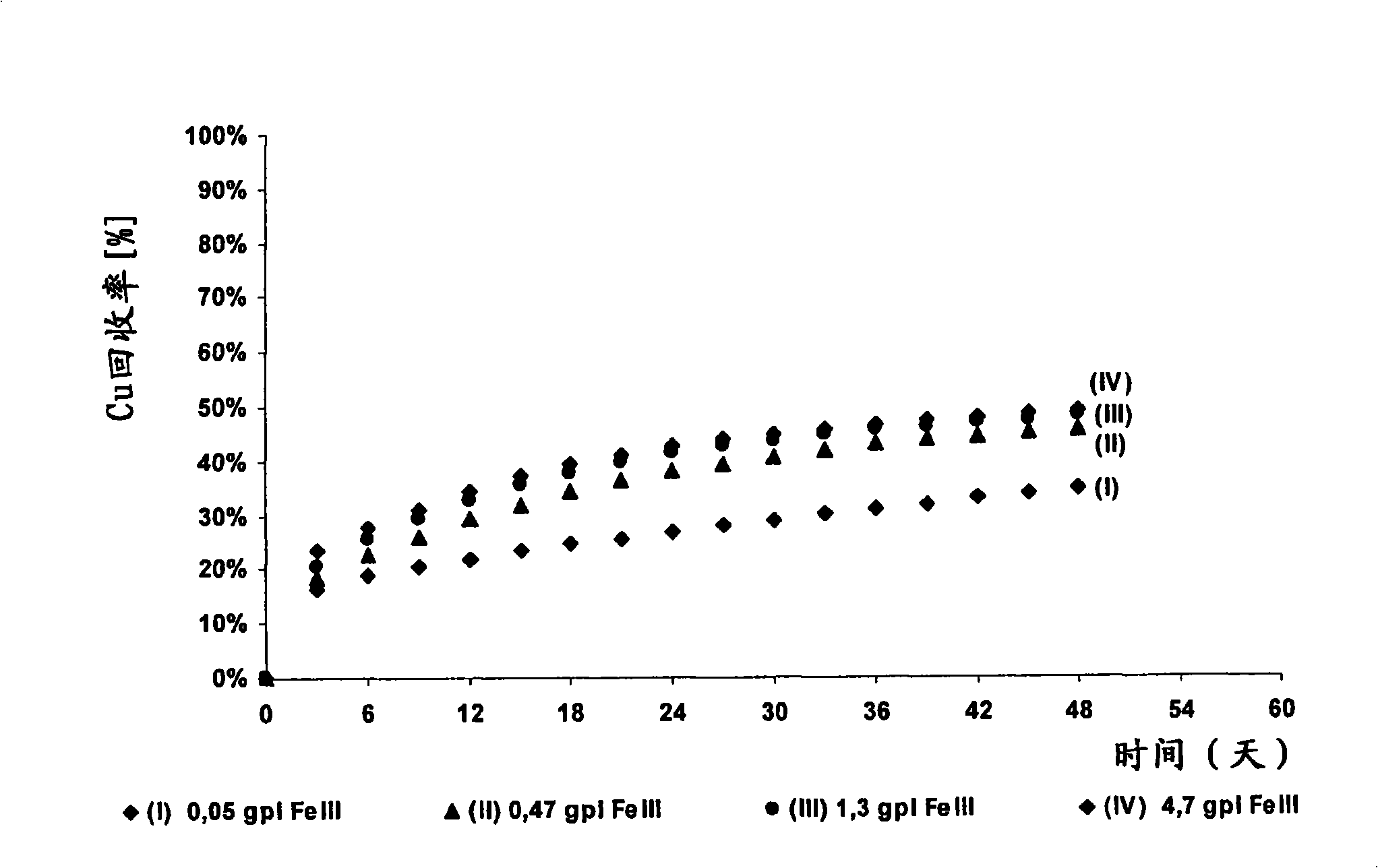Method for improving biological leaching speed of metallic sulphide ore or concentrate by using leaching liquid containing separated microorganism to inoculate continuously
A metal sulfide, microorganism technology, applied in the direction of process efficiency improvement, etc., can solve the problem that microorganisms are not inoculated, and the precise concentration of cells is not indicated.
- Summary
- Abstract
- Description
- Claims
- Application Information
AI Technical Summary
Problems solved by technology
Method used
Image
Examples
Embodiment 1
[0063]To compare the bioleaching activity of native bacteria (without microbial inoculum) relative to a serial inoculation of one microbial type Thiobacillus acidophilus thiooxidans (represented here as Licanantay DSM 17318), and by Wenelen DSM 16786 (acidophilic ferrous oxidizer Thiobacillus) with Licanantay DSM 17318 in a serial inoculation using a primary ore sample from the Codelco-Chile EITeniente Mine, consisting essentially of chalcopyrite (96.6%). The ore sample is bioleached in microcolumns, thereby simulating industrial process conditions in leaching of waste heaps or ore heaps. The experiment was carried out according to the following scheme:
[0064] 1. The column is made of polyvinyl chloride (vinyl polychloride) pipe, has an inner diameter of about 40mm, and contains a 20cm high compacted ore, and has a porous disc containing a 2cm high quartz sand bed at the bottom of the ore. Hold the ore.
[0065] 2. In the column, 225 grams of ores with a fraction of size l...
Embodiment 2
[0078] In order to examine the effect indicated in the previous example in secondary copper ores, the same experimental protocol as in Example 1 was used, but this time with a copper ore mainly composed of secondary copper sulphide species, The ore was obtained from the Codelco-Chile Radomiro Tomic Mine. The bacteria for the serial inoculation were microorganisms of the acidithiothiooxidans type (represented here by Licanantay DSM 17318), a mixture consisting of Wenelen DSM 16786 and Licanantay DSM 17318 was serially inoculated. The average concentration of total iron (as Fe(III)) in the leach solution was 0.17 g / l.
[0079] Be used for the characteristic of the ore of present embodiment as shown in table 2 below:
[0080] Table 2: Mineral composition of the ore used in the column of Example 2
[0081] substance
%Cu
63.7
blue chalcocite
26.8
copper blue
1.9
Bornite
2.5
0.1 ...
Embodiment 3
[0086] In order to check the effect of the previous examples, especially the initial stage of the method, under different concentrations of ferric ions, the same experimental scheme as described in Example 1 was adopted, this time from Codelco-Chile Mixed sulphide copper ore (40.8% of total copper as chalcopyrite) from the Radomiro Tomic Mine. The bacteria for the serial inoculation were microorganisms of the acidophilus thiothiooxidans type, represented here by Licanantay DSM 17318, and a mixture consisting of Wenelen DSM 16786 and Licanantay DSM 17318 was serially inoculated.
[0087] The performance of the ore used in the present embodiment is shown in table 3 below:
[0088] Table 3: Mineral composition of the ore used in the column of Example 3
[0089]
[0090] From image 3 As can be seen in the results, the iron content in the column is equivalent to 0.05g / L which is common in industrial water, column (i) shows the lowest copper recovery after 48 days of operation...
PUM
| Property | Measurement | Unit |
|---|---|---|
| electric potential / voltage | aaaaa | aaaaa |
| rate of recovery | aaaaa | aaaaa |
Abstract
Description
Claims
Application Information
 Login to View More
Login to View More - R&D
- Intellectual Property
- Life Sciences
- Materials
- Tech Scout
- Unparalleled Data Quality
- Higher Quality Content
- 60% Fewer Hallucinations
Browse by: Latest US Patents, China's latest patents, Technical Efficacy Thesaurus, Application Domain, Technology Topic, Popular Technical Reports.
© 2025 PatSnap. All rights reserved.Legal|Privacy policy|Modern Slavery Act Transparency Statement|Sitemap|About US| Contact US: help@patsnap.com



